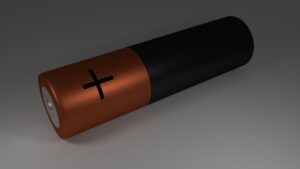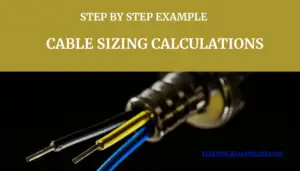3 Phase Power Formula, P =√3* V * I * pf, While 1 Phase Power Formula, P = V * I * pf,
Every day, we use the power formula to calculate the power for different loads, like motors, lighting, and more.
In this article, I’ll show you step by step how to calculate power and provide a power formula below.
Table of Contents
3 phase power formula
The formula for calculating the power in a three-phase electrical circuit is:
P=√3×VL×IL×cos(θ)
Where:
- is the power in watts (W).
- √3 is the square root of 3, approximately 1.732
- is the line-to-line voltage in volts (V).
- is the line current in amperes (A).
- is the power factor (cosine of the phase angle difference between voltage and current).
In a three-phase system, the power isn’t just the product of the line-to-line voltage (VL) and the line current (IL), as it is in a single-phase system.
To find the true power, you also need to multiply by the square root of 3 and the power factor (cos(θ)).
three phase power calculation
Let’s go through an example of a 3-phase load calculation step by step.
Example: Suppose you have a three-phase electrical system with the following parameters:
- Line-to-line voltage (): 400 volts.
- Line current (): 50 amperes.
- Power factor (): 0.9
Calculate the power () in watts (W).
P=1.73×VL×IL×cos(θ)
P=1.73×400 V×50 A×0.9, P
ingle phase power formula
The formula for calculating single-phase power in an electrical circuit is:
P=V×I×cos(θ)
Where:
- P is the power in watts (W).
- is the voltage in volts (V).
- I is the current in amperes (A).
- is the power factor
This formula calculates the real power (in watts) in a single-phase circuit. The power factor (cos(θ)) represents the phase angle difference between voltage and current and indicates how effectively electrical power is converted into useful work.
single phase power calculation example
Let’s walk through an example of calculating single-phase power step by step.
Example: Suppose you have a single-phase electrical circuit with the following parameters:
- Voltage (): 120 volts.
- Current (): 5 amperes.
- Power factor (): 0.9
Calculate the power () in watts (W).
P = V×I×cos(θ)
P=120 V×5 A×0.9 = 540 W
dC power formula
The formula for calculating DC (direct current) electrical power is straightforward:
P=V×I
Where:
- represents power in watts (W).
- is the voltage in volts (V).
- I: is the current in amperes (A).
dC power Calculation example
Let’s walk through an example of calculating DC (direct current) power using the formula:
Example: Suppose you have a simple DC circuit with the following parameters:
- Voltage (): 12 volts.
- Current (): 5 amperes.
You want to calculate the power () consumed by this DC circuit.
Use the DC power formula.
P=V×I=12 V×5 A
Don’t Leave Empty-Handed!
Install my Free Android App on Google Play:
Electrical Cables Most Common Tables “Cables Tables”
And, my Electrical Calculations App “Fast Electrical Calculator”
Discover more great content by subscribing to My channel
Looking to stay ahead of the game in the world of electrical engineering? Subscribe to my YouTube channel and gain access to exclusive content you won’t find anywhere else!
The staff I recommend
(Amazon Affiliate Links to products I believe are high quality):
- Economy 120 Volt/60Hz AC Power Source – Step-Down Voltage & Frequency Converters 1800W
- UNI-T Digital Multimeter Tester UT139C
- 50-Amp Extension Cord for RV “100ft”
- Voltage Stabilizer 110/220v
- Hair Dryer “best selling“
- TOSHIBA EM131A5C-BS Countertop Microwave Ovens
Disclaimer: This contains affiliate links to Amazon products. I may earn a commission for purchases made through these links.



